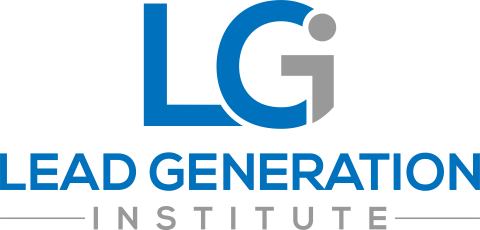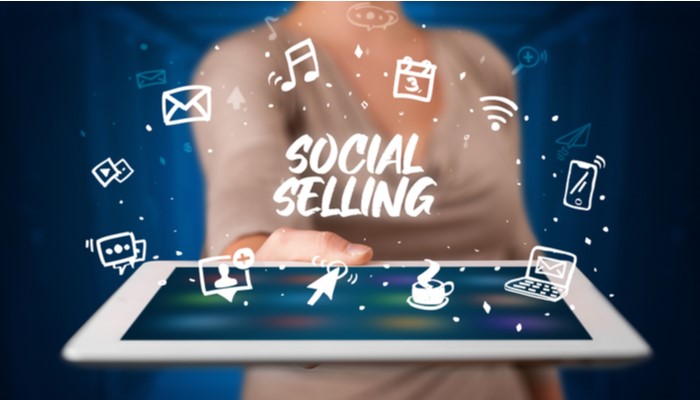With the appearance of social media on the world stage in recent decades, social media marketing and advertising are at an all-time high. Most businesses of all shapes, sizes, and industries have at least one business profile on one of the many social channels out there.
Whether it’s just for the sake of an online presence or an attempt at building a comprehensive social media marketing and advertising campaign, companies can’t ignore the importance of social media platforms. The potential benefits, in terms of lead generation, lead nurturing, brand reach and recognition, building trust, or boosting sales, among others, far outweigh the costs.
In more recent years, however, a new digital strategy regarding social media has come into play – social selling.
What is Social Selling?
Social selling is the technique of leveraging social media to connect with prospects and customers by building and maintaining long-term relationships and, ultimately, making sales. Even though it can be considered a content strategy of sorts, since you are using different types of content to achieve your goals, it shouldn’t be confused with either a digital advertising or a marketing strategy.
Social selling is not conducted by a marketing team, but a sales team that uses its social network as part of the sales process to generate and nurture leads throughout the buyer journey. Since it’s much easier to build trust and maintain meaningful relationships over a social media platform than it is with cold calls, for instance, sales reps using social media will often outperform their peers who aren’t.
In fact, social selling statistics indicate that social sellers see, on average, 18% better pipeline volume and 21% increased pipeline velocity by leveraging this particular sales strategy.
The Best Social Selling Platform for B2B Sales Teams
Today, there are plenty of social channels to choose from. But when it comes to B2B social selling, our attention needs to be focused mainly on LinkedIn. The exact value this social media platform is able to generate will depend largely on each sales team’s needs and objectives.
Social Selling on LinkedIn
LinkedIn is the most professional social network, making it ideal for encountering potential B2B buyers. [bctt tweet=”LinkedIn’s Social Selling Index (SSI) will help users measure their performance, while helping to create 45% more sales opportunities. ” username=”LeadGenInst”] It will also help double your chances of hitting your quota and outselling your peers who aren’t social selling by up to 78%.
It’s also important to remember that LinkedIn has over 500 million active users, 40% of whom use the platform daily. In addition, around 61 million of these users are senior-level influencers, while around 40 million are in decision-making positions. LinkedIn also makes up over half of all B2B social traffic and is the most widely used social channel among Fortune 500 companies. That’s why it’s easy to see why LinkedIn generates 80% of B2B social leads (Twitter – 13% and Facebook – 7%), as well as three times more conversions than the other two social platforms put together.
That said, the basic steps for B2B sales reps using LinkedIn for social selling include:
A Fully Optimized Profile
Your LinkedIn profile should look nothing like a resume. Since the focus will be mostly on building relationships, almost nobody will care about your past activities. What B2B customers will care about, however, is that you are an expert in your field, someone who knows what they’re talking about. You will want to present yourself as a thought leader and less like a sales professional, which means that this is not the place for anything resembling a sales pitch.
Share Valuable and Relevant Content
As a social media strategy, social selling will rely, in large part, on sharing content that your target audience will find useful. A well-placed blog post at the right time can quickly elevate you to a thought leader in the eyes of a potential client.
The content you choose to share with every LinkedIn connection doesn’t always have to be your own, either. As long as it’s relevant and speaks to your potential customers’ pain points, third-party content will work equally as well. Just remember to add your own thoughts on the topic and how your prospects can use that information for their needs. Crafting the appropriate messaging and important takeaways from content you share that is not your own is time well spent.
You also don’t want to spam or post content that only speaks about your company or product. The content shared should educate and provide value, which will help you build trust and rapport with your customers and prospects. An account-based marketing strategy (ABM) will help you here. Not only will it help you better identify your ideal prospects, but it will also ensure your sales and marketing teams are on the same page regarding what content should be created and when it should be shared.
Another useful social selling strategy, while on the topic of content, is engaging with what your prospects are sharing. This means commenting, liking, tagging others, resharing, etc. It’s a great way to keep yourself on their radar. The key, however, is not to overdo it and only engage with content that you genuinely find interesting.
Real-Life Communication
When you get started with social selling, it’s easy to forget that this sales strategy is not about quantity but quality. It’s a long game where you aim to build meaningful relationships and slowly guide your leads down the funnel. It’s a sales process that requires genuine connections achieved only through real-life communication.
Don’t cut corners or start promoting your products too early or too aggressively. In fact, aim not to sell anything on LinkedIn. Use the platform solely for engagement and personal branding and save your sales pitches for your other digital marketing and advertising endeavors.
A Healthy Dose of Automation
While your communication and engagement should be personal and done by a real person, this doesn’t mean that automation won’t have a role to play. LinkedIn offers B2Bs several social selling tools that will make this process go much more smoothly. Take, for instance, LinkedIn Sales Navigator.
For example, you can use its Lead Builder feature to create lead lists using custom criteria. These can, in turn, be used to find or upload new accounts. Search Filters will help you find the right prospects faster based on criteria like company size, seniority, TeamLink connections, and more. Search Alerts will let you know every time there’s a new result to view. The Introduction Requests feature grants you the possibility to ask for introductions to 2nd-degree prospects from your 1st-degree connections. You can then use InMail to message those prospects even if you don’t have their email.
Though not a tool, per se, LinkedIn Groups offer you an opportunity to get a head start on your social selling process. By joining industry-relevant groups, you can start networking with prospects, customers, and peers much more quickly. You’ll also be able to brand yourself as a thought leader to a wider audience.
All in all, LinkedIn is a great place to get started with social selling. And once you get a foothold on this social platform, you may want to look to Twitter for its social listening benefits, as well as Facebook for its notoriety. If you want to learn more about social selling best practices, subscribe to our newsletter and get the latest delivered to your inbox




